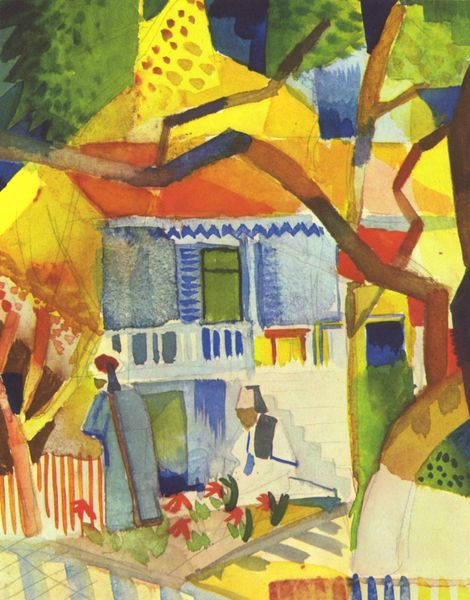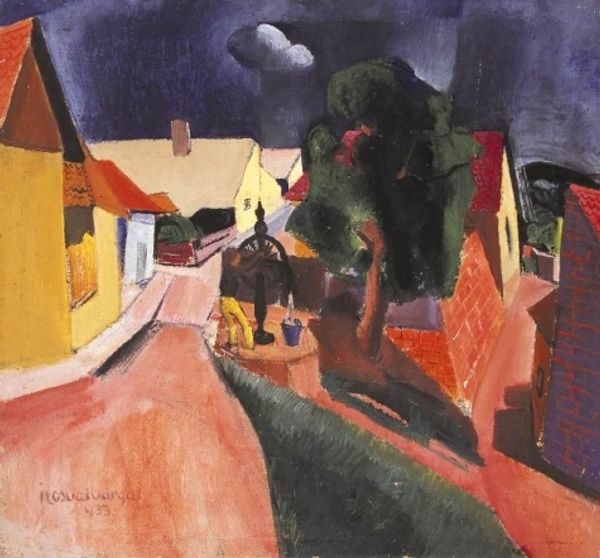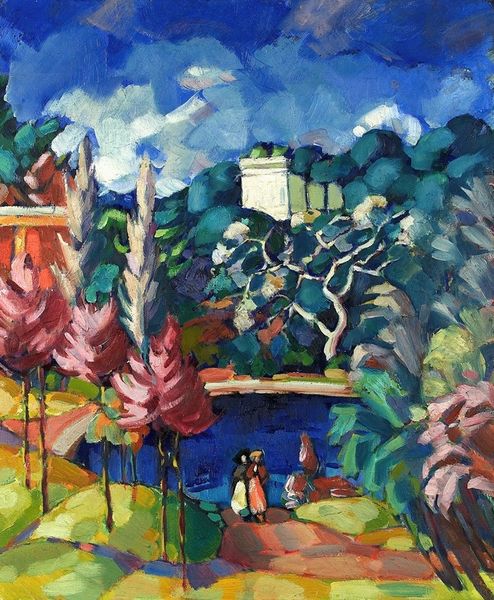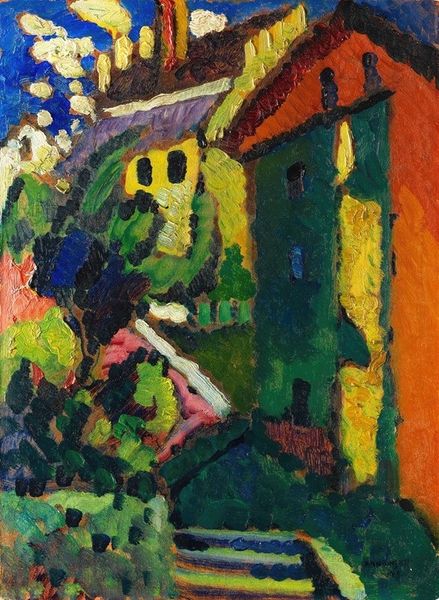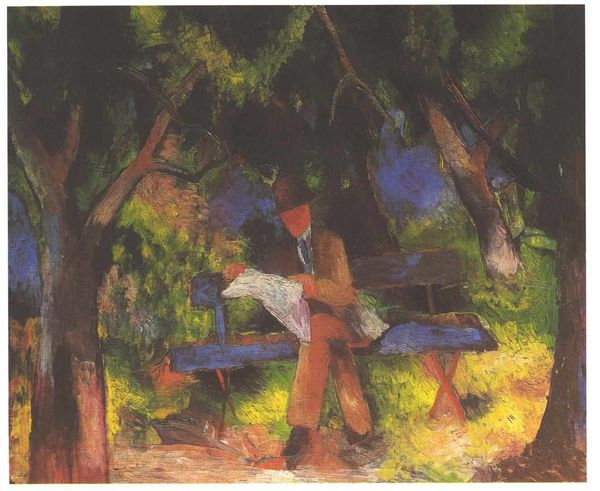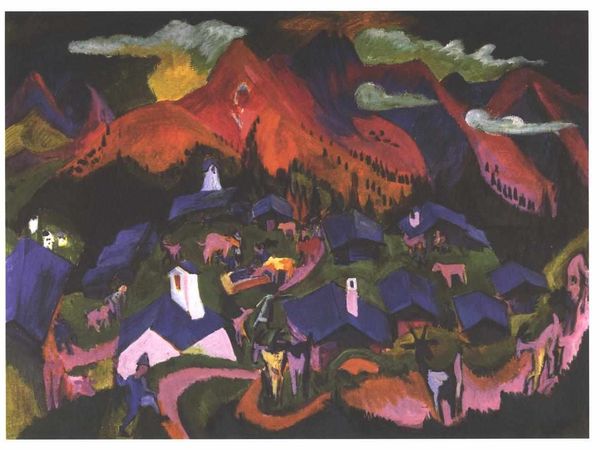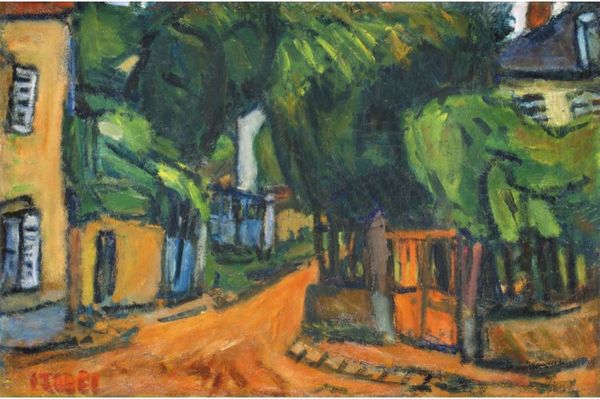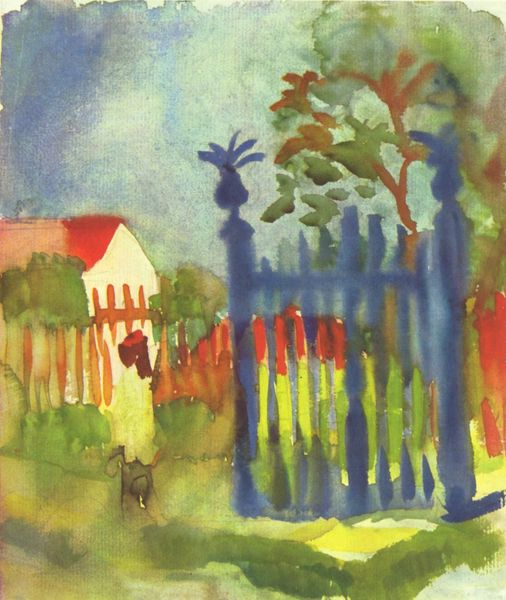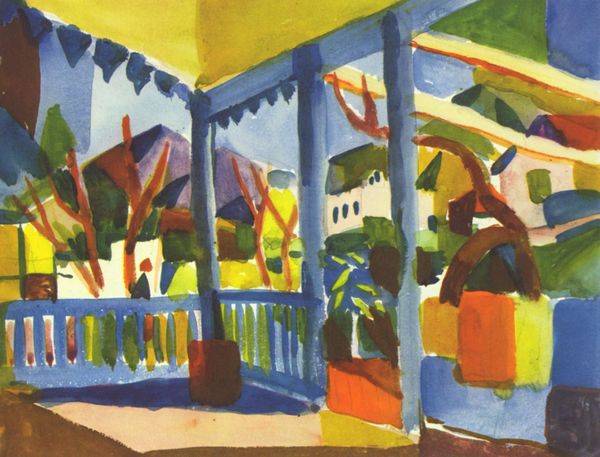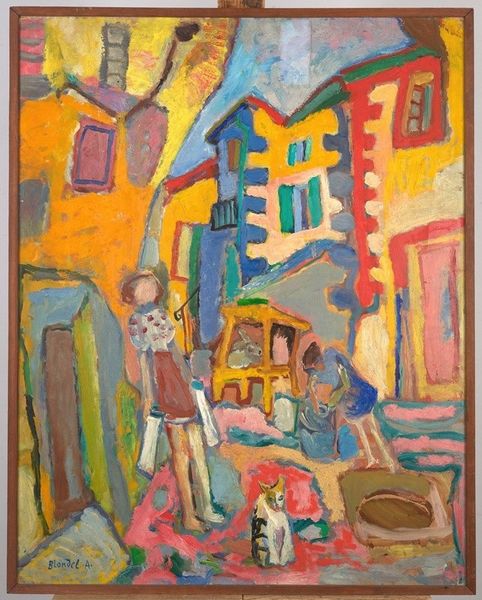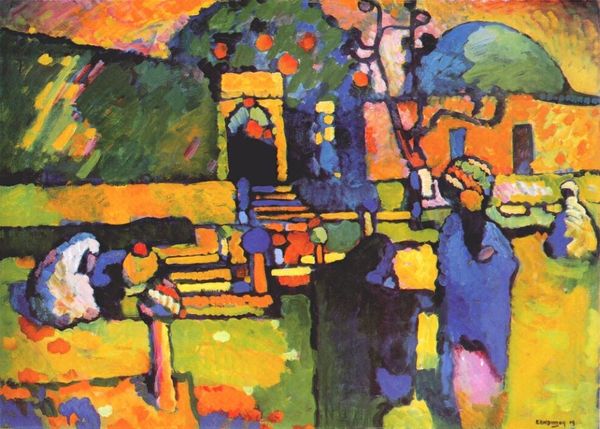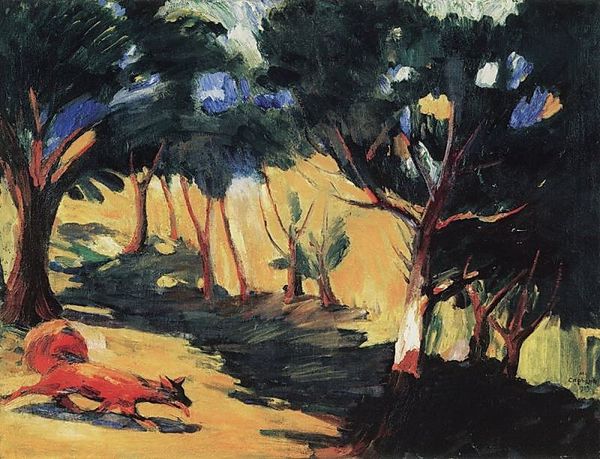
painting, oil-paint
#
painting
#
oil-paint
#
landscape
#
expressionism
Copyright: Public domain
Curator: Here we have "Children at the Fountain" by August Macke. What strikes you first about it? Editor: Immediately, I'm drawn to the painting's almost naive charm. There's a kind of unsettling calm; those flat, bright colors create a dreamlike world that feels at once welcoming and slightly disorienting. The almost architectural simplification of the landscape...it feels both childlike and deliberate. Curator: It is quite intriguing. Macke's position within the German Expressionist movement, specifically his engagement with the artistic group Der Blaue Reiter, provides key insights. His approach blended Expressionist ideas with influences from French movements like Fauvism and Cubism. Editor: The distorted perspectives and somewhat jarring juxtaposition of colors hint at those Expressionist influences, absolutely. But it avoids the heavier, more angst-ridden themes we often associate with the period. Macke seemed interested in everyday life. Is he consciously excluding social tensions? Is there some inherent innocence being portrayed, or an imposed sense of looking back? Curator: Considering the broader socio-political context of early 20th-century Germany, particularly the build-up to World War I, Macke’s art offers an alternative view, almost a visual respite from looming social unrest. The presentation of youthful leisure here, as in much of his oeuvre, creates a deliberate focus on pleasure and perhaps a muted utopian impulse. But I don't read it as 'innocent' necessarily. Editor: I can see that. Rather, maybe an intentional creation of an idealistic escape? Yet that fountain, so centrally positioned...fountains often function as social hubs, sites of gathering, labor and interaction, particularly for women. Do you think that detail might push toward some consideration of those intersections? Curator: Fountains as sites of interaction resonate, especially when considering water’s traditional associations with purity, life, but also labor, in many societies. Here, though, it seems to be presented more for contemplative play. It makes me wonder whether that's reflective of class or an aspiration? Editor: Yes, an element of class and even race is unacknowledged. By overlooking who can access spaces of leisure, there may be inherent social and historical concerns regarding representation being elided here. Curator: It brings forward what these paintings omit in their visions of public harmony. Well, thinking about those inclusions and omissions helps contextualize his time a little further, doesn't it? Editor: It does, it adds an important complexity to viewing this moment that pushes it from face value towards the questions surrounding social structures and how people actually relate.
Comments
No comments
Be the first to comment and join the conversation on the ultimate creative platform.
